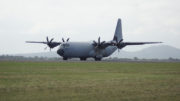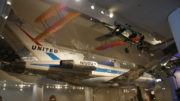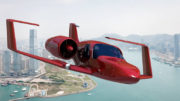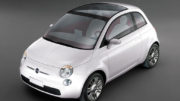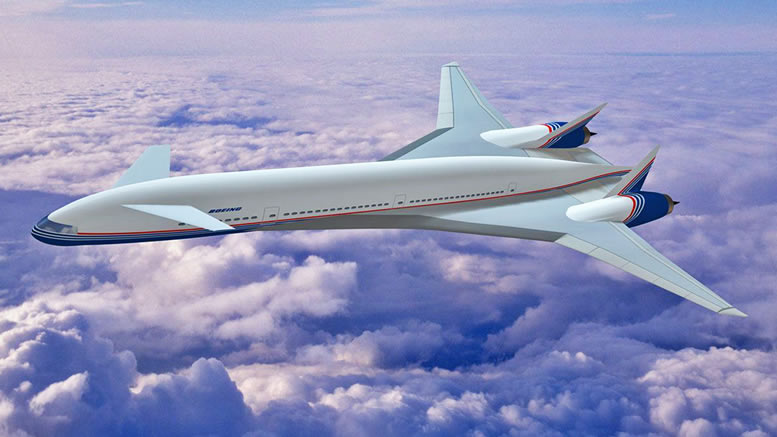
The Boeing Sonic Cruiser was a subsonic concept aeroplane proposed by Boeing in 2001.
The Sonic Cruiser was proposed shortly after the launch of the Airbus A380 by rival Airbus. The Sonic Cruiser was designed for rapid point-to-point connections for only 250 passengers. With delta wings and flying just short of the speed of sound at 0.95 Mach (1131 km/h), the Sonic Cruiser promised 20% faster speed than conventional aeroplanes without the noise pollution caused by supersonic Concorde’s sonic boom.
Unveiled on March 29, 2001, the new concept featured canards similar to those of the Tupolov TU-144, a unique “gloved” delta wing, rear-mounted engines and two horizontal fins at the back of the aeroplane instead of the standard horizontal and vertical tail section found on today’s jetliners.
It was expected that the new aeroplane will accommodate 200 to 250 passengers, fly between 6,000 and 9,000 nautical miles, and travel at a speed between Mach 0.95 and Mach 0.98- 15 to 20 percent faster than what currently is possible. It also will have a cruising altitude in the mid-40,000-foot level.
In 1999, a team of about a dozen engineers first began significant work on the new design. By late 2000, they had developed an aeroplane that looked very much like the design concept.
In early 2001, resources again were added to the effort. Discussions with airlines in North America, Asia and Europe in the first quarter of the year confirmed the design offered exactly what airlines and passengers are looking for: the ability to fly quickly and directly to their destinations while avoiding time-consuming and costly stops at major hubs – a concept known as point-to-point service.
With its huge speed advantage, the Sonic Cruiser was expected to cut travel times by approximately 20 percent, or one hour for every 3,000 miles travelled. Also, because it can travel at altitudes well above today’s commercial aeroplanes, the airlines will be less impacted by traffic congestion, an emerging industry concern.
With the downturn of the airline industry, a plane as radical as the sonic cruiser was the last thing on airlines shopping lists. In fact, what airline operators started to ask for was more economical planes. This caused Boeing to rethink the future of the Sonic Cruiser, leading to scrapping of the project and start of development of the super economical 7E7 project.
The Sonic Cruiser was intended to serve an all-new market, and Boeing was to continue to build it existing range of aircraft families. Following customers’ reaction to this plan, the last thing Boeing wanted was to lose business to rival Airbus. With this in mind the 7E7 project was born, it gave customers a plane that suits their needs at much lower operating costs, and it gives Boeing the opportunity to replace their 757 and 767 series of aircraft with just one model lowing their manufacturing costs. The 7E7 project was eventually launched in 2007 as the Boeing 787, it has been popular with both airlines and passengers.

